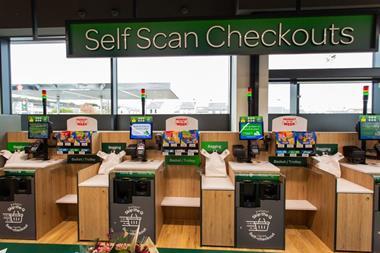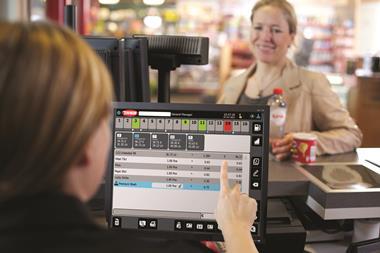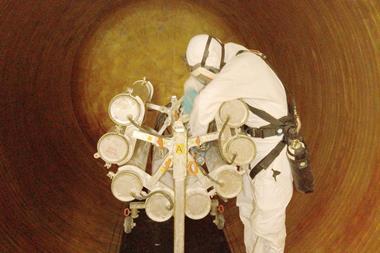
Having any work done on your forecourt can be a headache, especially if it means downtime across whole site.
Top 50 Indie Petrocell recently had tank-lining work done at four of its sites by Eurotank Environmental which prides itself on causing minimal disruption to sites.
Edenbridge Service Station in Kent was the last Petrocell site to have its tanks upgraded using Eurotank’s Lifeliner single-skin system. The six-tank upgrade at Edenbridge took 30 days however the site was able to stay open throughout the works.
Eddie Fataciune, head of operations at Eurotank Environmental, says: “We always aim to cause minimal disruption on site so the work is divided into two phases to maintain availability of both grades of fuel on at least half of the pumps.”
Petrocell director, John Dowling, says: “Eurotank gave us various options and we chose the one that was environmentally responsible and most appropriate for us. In this case it was single-skin Lifeliners, which have a 20-year warranty.”
Before lining begins, all tanks are cleaned and inspected. The single-skin Lifeliner system comprises three layers of fibre glass followed by a wax coat.
“We have been using Eurotank for years and the team are excellent,” says John. “Especially at accommodating us with the minimal amount of disruption on site. They are always professional and are also very safety conscious.”
Other Petrocell sites in the programme were Colwich Service Station in Staffordshire, Winslow Service Station in Buckinghamshire and Sidmouth Service Station in Devon.
New build, new worries?
New-to-industry sites are being built more and more, which causes huge excitement in the trade, however Edward Wheeler, group managing director of Eurotank Service Group, worries that some new-to-industry forecourts are not designed with modern fuel specifications in mind.
“It’s now standard for new sites to be built with very large underground storage tanks, with often one grade per tank. The main grades of petrol and diesel can be fed from a single 70,000- or 80,000-litre tank with smaller tanks for the lower volume super grades.
“Cost engineering to reduce the capex spend on new stations now likely causes a much bigger spend on ongoing maintenance for that station when it comes to fuel management.
“All retail fuels now contain some percentage of biofuels, which require much cleaner and dryer storage conditions than their 100% mineral distant relative fuels.
“Petrol and diesel can now pick up water, rust, sediment and other contaminants, which can both block fuel pump filters and damage vehicles.”
Water management is critical to keeping fuel ‘on spec’ and not causing expensive downtime and remedial works but when it comes to tanks, the bigger the tank, the bigger the challenge to keep the tank clean and dry.
Wheeler explains: “With biofuel blended fuel, you don’t really want a bigger tank than 20,000 litres as this is small enough to keep fuel turning over, without water building up far away from the tank manholes in the ‘dead bottom’ area.
“When it comes to tank gauges, it is not commonly known that you actually need quite a lot of water to lift a tank gauge water float – 10-20mm depending on the gauge, as the float needs enough water to become buoyant on/in the water to lift up. That amount of water in the bottom of a modern fuel tank is a disaster for fuel quality because this water will be held in suspension far longer with biofuel blends, during and after a tanker delivery.
“Phase separation in petrol blends and microbial contamination in diesel blends will happen if 10-20mm of water is not removed.”
Wheeler says another problem with petrol station fuel system design in the UK is that tanks are generally installed with one tank manhole/manway. Within the tank lid, all associated pipework is crammed in.
“Putting a tank gauge next to a fill pipe is the worst place to install it,” he warns. “Firstly, there is a significant chance of the water float being affected by the turbulence of the delivery, and secondly, this is the area of the tank that is least likely to have water present. Regular fuel deliveries keep the floor area of the tank directly beneath the fill point very clean as debris is pushed away during filling. Sediment on the floor creates dam-like barriers for free water to build up behind, so you will always have far more water at the ends of the tanks than where the tank gauge is fitted. This makes it far more likely that you will have customer complaints about fuel quality before you have a water alarm on a tank gauge.”
Fortunately, says Wheeler, the saving grace is that the new fuels themselves will mop up nearly all the water that builds up naturally in atmospheric tanks.
“An underground fuel tank is an atmospheric tank because when you sell fuel from the tank, you are also pulling in fresh air from the tank vent pipe, which contains moisture and even micro-organisms.
“New tanks should be coated internally to prevent steel rust particles from being transported through the fuel system to customers. Rust particles can be sub-micron so will pass through pump filters, so they provide little protection from metallic rust particles.
“Pipework lengths should be as short as possible as this reduces the risk of future failure but, particularly with diesel, reduces the internal surface area of underground pipework where microorganisms can now happily survive, due to the bio diesel element.
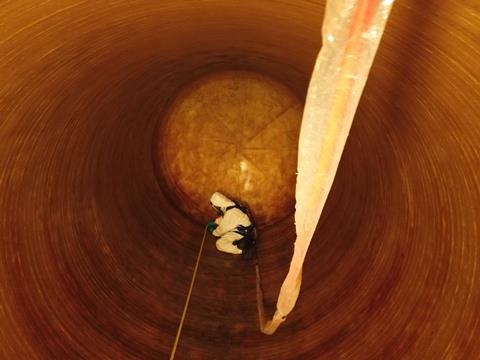
Pressure versus suction
There are two types of fuel delivery systems available for petrol stations. Suction systems, where the fuel is sucked out of the tank by a pumping unit and motor in the forecourt pump, and pressure systems, where the fuel is pushed to the forecourt pump by a submersible pump in the tank.
“A submersible pump should be the most reliable system for delivering fuel to consumers at the highest possible speed and is the preferred method by far in many countries but suction systems are by far the most popular fuel systems in the UK,” says Wheeler.
“If you are constructing a petrol station with a pressure system, you need to use a good contractor for the pipework and chamber/sump installation because pressure systems need secondary containment to work effectively as the submersible pump can leak and push out fuel quickly, which needs to be contained and detected by sensors. Sensors don’t work for leak detection if they are under water!
“Suction systems can be installed by less diligent contractors and as long as the pipework is ‘tight’ then secondary containment can leak and the chamber/sumps can be full of water and nobody would really notice. So, if you want to use the cheapest contractor you can find, suction is the fuel system type to choose.
“Suction systems rely on the pipework falling back to the tanks from the pumps so the depth of the tanks directly relates to the distance from the pumps. It is generally a bad idea to have the tanks far away from the pumps as this will increase the depth of the tanks and generally make it harder for the pumps to pull fuel up to the customer.
“So if you need to put the tanks far away from the pumps, using a pressure system would make more sense.”

Material compatibility challenges
Eurotank has seen a lot of problems caused by using seals and gasket materials that weren’t suitable for modern fuel blends. “We’ve seen tens of thousands, sometimes over £100,000 per incident of cost to the retailer from a single seal failure, which causes vehicle breakdowns and damaged fuel product that has to be taken away for recycling.
“Don’t leave this to chance when you are in the design phase of a new petrol station. You need to give as much attention to material compatibility as you do to how your shop is fitted because it could come back to bite you in the future.
“In all the incidents we’ve dealt with over the years, the seals and gaskets were meant to be compatible with the fuel in the tank but they weren’t, so make sure you challenge the architect/contractor on what equipment is going to be used and question its compatibility. For petrol, the highest fluro elastomer material like ‘Viton’ is necessary. It’s very expensive in comparison to lower ‘fuel-proof’ specifications so there is a significant commercial pressure not to use it, but you need it to protect yourself from failure.”
Wheeler summarises his advice for new-to-industry sites:
• Smaller tanks not bigger tanks
• Multiple manholes to separate fill pipes and tank gauges
• Easy access for remote and manned entry cleaning for general housekeeping
• Internally coated steel tanks or composite tanks
• Suction system tanks kept as close as possible to the pumps
• Pressure is best but use a high quality contractor to install pipework and chambers
• Pay attention to the specification of materials in contact with fuel/vapour and don’t just take verbal confirmation of compatibility
• Pay more for your fuel system than the lowest cost design as it will save you money in the long run.
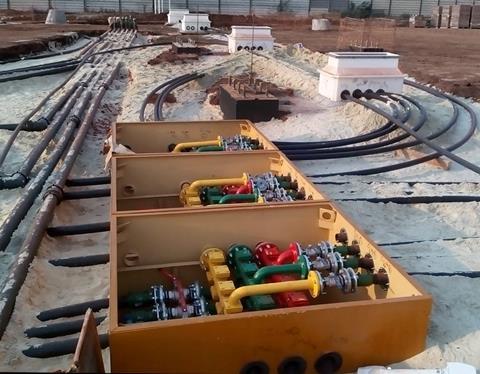
One-stop-shop
Petroassist UK’s experienced teams have installed thousands of miles of pipework across the UK fuel retailing industry, as well as fuel pumps and tank gauge systems.
The company prides itself on having a complete installation service providing customers with a ‘one stop shop’ for all forecourt development requirements including pipework, electrical installation, civils works and project management.
Barry Onions, head of sales – UK & Ireland at Petroassist UK, says: “These pipework installations are the foundation to any site and our team has an extensive experience of working with major groups and independent retailers across England, Scotland and Wales.
“We supply state of the art equipment but, more importantly, it is the support and maintenance of the equipment, which is where we really stand out,” he explains.

Gilbarco Veeder-Root’s new wireless system for ATGs
As we mentioned above, disruption to sites can cost operators dearly. Gilbarco Veeder-Root’s new solution allowsoperators to retrofit their sites with an ATG system. The new TLS-RF Series 4 Wireless System is great for when where in-ground wiring or forecourt installation is not practical for numerous reasons. The system is also good for retrofits and expansions.
The benefits of TLS-RF Series 4 Wireless include:
• Reduced installation costs – material and labour
• Shorter site preparation time
• Less disruption and associated loss of revenue/profit
• Reliable, low-cost connectivity
• Secure, encrypted data transmission.
The system can monitor up to eight probes/sensors and has a transmitter in-sump range up to 91m, with a direct line of sight of 5km*.
It has a waterproof battery pack and transmitter housing and a battery life of up to two years**.
Its Semtech LoRa wireless technology provides long range and low power wireless secure data transmission.
The TLS-RF Series 4 Wireless System is compatible with the following ATG consoles, probes and sensors:
• 8600 TLS-450PLUS
• 8601 TLS4
• 8463 Mag Plus Probe, Inventory Only
• 8570 Mag Dispenser Pan/Sump Sensor
Ben Chase, associate product manager at Veeder-Root says: “With the TLS-RF Series 4 Wireless system, there is no need to wait, and the benefits of automated monitoring can be enjoyed straight away. You’ll experience the next generation of wireless platforms, built on a strong legacy of thousands of globally deployed systems over the past 30-plus years.”
*Transmission range may be affected by external interference
**Battery life differs based on transmission range, transmission rate, and ambient temperature

























